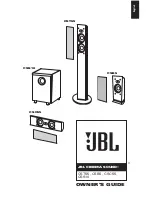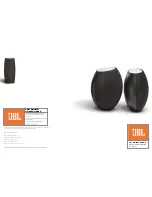
16
[ it ]
[ ru ]
[ en ]
[ de ]
RIS 2500_3500_5500HE/HW EKO 3.0
новленной, обходная заслонка («By-pass»)
закрывается (свежий наружный воздух про-
пускается через пластинчатый теплообмен-
ник). В случае, если устройство с роторным
теплообменником, тогда наченается его вра-
щение. Если установленная температура все
еще не достигнута, тогда включается обогре-
ватель (электрический или водяной) и он не
выключается (в водном варианте – открыва-
ется/закрывается клапан обогревателя) до
тех пор, пока не будет достигнута заданная
температура. Если температура приточного
воздуха держится выше установленной, тог-
да сначала выключается обогреватель. Если
температура все еще выше заданной, тогда
открывается обходная заслонка или, если в
устройстве есть роторный теплообменник,
останавливается его вращение.
На дистанционном пульте управления тем-
пература (устанавливаемая и измеренная
датчиками) отображается в градусах Цель-
сия (оС).
Температура воздуха помещения (-ий) мо-
жет регулироваться не только по датчику при-
точного воздуха, но и по датчику вытяжного
воздуха (как выбрать эту функцию, см. Опи-
сание пульта FLEX, пункт II.6. 5. 3).
При выборе алгоритма управления датчи-
ком вытяжного воздуха температура приточ-
ного воздуха ограничивается после оценки до-
полнительно поступающего тепла (тепло, рас-
пространяемое солнцем, электрооборудова-
нием...) Таким способом экономится энергия
для дополнительного согревания приточного
воздуха – комната (помещение) обогревает-
ся после оценки температуры помещения, что
предназначено для обеспечения желаемого
температурного микроклимата помещения.
Электрический нагреватель приточного воз-
духа (когда электрический – нагревательные
элементы сопротивления) управляется кон-
троллером ESKM, с сигналом PWM. Когда на-
греватель приточного воздуха водяной – при-
вод водяного клапана управляется контрол-
лером RG1, также имеющим аналоговый сиг-
нал 0-10V DC.
Функция «BOOST»
Вентиляторы запускаются на максималь-
ную скорость, на пульте дистанционного
управления (FLEX) изображается «BOOST».
Функция «BOOST» не работает, если срабо-
тала защита теплообменника.
На пульте (FLEX) можно выбрать желаемую
продолжительность работы функции в случае
исчезновения сигнала активации этой функ-
ции (как выбрать эту функцию, см. Описание
пульта FLEX, пункт II.6.6.).
В пункте меню пользователя Add.func. име-
ется настройка времени BOOST в минутах
(заводская настройка Off). Например, уста-
новлено 5 мин., тогда, если BOOST управля-
ется при помощи внешнего сигнала управле-
ния – в случае исчезновения сигнала управ-
ления BOOST будет работать 5 мин., если
BOOST управляется при помощи быстрой
кнопки (пульта FLEX) – после нажатия кноп-
ки 1 раз BOOST активируется на 5 минут, по-
сле нажатия кнопки во второй раз – BOOST
деактивируется немедленно. Максимальная
настройка – 255 мин.
Функция «START/STOP»
Функцией «START/STOP» запускается
или останавливается работа рекуперато-
ра, на пульте дистанционного управления
(FLEX) изображается «STOP». При положе-
нии «START» рекуператор работает в соот-
ветствии с последними установками пульта.
Функции «FanFail» и «FanRun»
Возможность подключения внешней инди-
кации состояния вентиляторов, напр., инди-
кационную лампочку, которая визуально отра-
жает состояние работы устройства.
Равномерное управление обогрева
-
телем
Внедрена новая функция – равномерная
поддержка температуры воздуха с точно-
стью 0,5 оС, путем использования симистор-
ного модуля – ESKM... (эти модули установ-
лены только на обогреватели, подключенные
к трехфазной сети питания).
Охлаждение при вентилировании.
Существуют два типа охлаждения – с ис-
In case the set temperature is not reached,
the heater (electric or water) is switched on
and operates (heater valve is opened/closed if
water heater is used) until the set temperature is
reached. When supply air temperature exceeds
the set temperature, the heater is switched off in
the first place. If the temperature is still greater
than the set temperature, the by-pass valve is
opened or rotation is stopped if the device has
rotor heat exchanger.
In the remote controller, temperatures (the set
and the measured) are displayed as degrees
Celsius (°C).
Room air temperature can be adjusted not
only according to the supplied air temperature
sensor, but also according to the extracted air
sensor (see FLEX panel description II.6.5.3 for
details on selecting this feature).
When control algorithm of the extracted air
sensor is selected, then supply air temperature is
adjusted based on estimated additional received
heat (heat emitted by the sun, electric heaters,
etc.). Thus the energy for excessive heating of
the supply air is saved. The room is heated based
on the estimated room temperature to provide
the desired room temperature microclimate.
Supply air electric heater (resistance heating
elements if the electric heater is used) is con-
trolled by the ESKM controller using the PWM
signal. If the water supply air heater is used, then
the actuator is controlled using RG1 controller
with analogous 0-10V DC signal.
“BOOST” feature
Fans are started at maximum speed and
“BOOST” is displayed in the remote control
panel (FLEX). “BOOST” feature is inactive if the
heat exchanger protection is triggered. When
triggering signal for this function disappears, the
desired operation period for this feature can be
selected in the control panel (FLEX) (see FLEX
panel description II.6.6 for details on selecting
this feature).
There is boost time setting in minutes (factory
setting: Off) in the user menu item Add.Func. For
example, if 5min is set, then in case the signal is
lost for boost controlled with the external control
signal, the boost will be active for 5 minutes.
For boost controlled with the fast button (FLEX
control panel), boost is activated for 5 minutes
if the button is pressed once, and boost will
deactivated immediately if the button is pressed
second time. Maximum setting is 255min.
START/STOP feature
The operation of the recuperator is started or
stoped using the START/STOP feature. “STOP”
is displayed at the remote control panel (FLEX).
In START mode, the recuperator operates based
on the latest settings of the panel.
FanFail and FanRun features
It provides option to connect the external fan
state indication such as the indication lamp which
would visualize the state of the device.
Continuous control of the heater
The new feature is installed: continuous keep-
ing of the supply air temperature (accuracy up
to 0,5 °C) by using two-way thyristor module
– ESKM... (these modules are installed only in
heaters connected to the three-phase mains).
Cooling by ventilation:
Two types of cooling exist: using halocarbon or
water cooler. Cooling is based on the algorithm
of the PI regulator and is activated when there
is need for cooling. Conditions for activation and
deactivation of halocarbon cooler can be set and
changed using the menu of the FLEX remote
control panel (see section II.6.4. of the FLEX
description). Actuator position of the water cooler
is set accordingly to the PI regulator in the range
between 0% and 100%. The halocarbon cooler
is switched on when PI regulator value exceeds
the value set in the menu (see section II.6.4.2.
of the FLEX description). The halocarbon cooler
is switched off when PI regulator value is less
than the set value (see section II.6.4.3. of the
FLEX description).
Ventilation:
Three types of ventilation are possible (see
section II.6.3. of the FLEX description): based on
the supply air (Supply), based on the extracted
air (Room) and automatic (ByOutdoor). When
operation is based on the supply air, the sup-
ply air temperature is maintained as set on the
scher eingelassen). Wenn in der Anlage ein
Rotorwärmetauscher eingerichtet ist, wird dann
sein Drehen gestoppt. Wenn die eingestellte
Temperatur unterschreitet wird, wird der (Elek-
tro- od. Wasser)Heizer eingeschaltet und nicht
ausgeschaltet (durch das Wassergerät wird das
Ventil des Heizers geöffnet/geschlossen), bis
die eingestellte Temperatur erreicht wird. Wenn
die Zulufttemperatur überschritten wird, wird
die Bypass-Klappe geöffnet oder – wenn in der
Anlage ein Rotorwärmetauscher eingerichtet
ist – das Drehen des letzteren gestoppt.
Auf dem Fernbedienungspult wird die Tempe-
ratur (die eingestellte und die durch die Fühler
gemessene) in Grad Celsius (°C) dargestellt.
Lufttemperatur des Raums (der Räume) kann
nicht nur laut dem Fühler für die Zulufttempe-
ratur, sondern auch laut dem Fühler für die
Ablufttemperatur geregelt werden. (Auswahl
dieser Funktion: siehe Beschreibung des Pults
FLEX, Punkt II.6.5.3.)
Nachdem der Bedienalgorithmus des Ab-
luftfühlers gewählt wird, wird die Zulufttempe-
ratur nach der Bewertung des zusätzlichen
Wärmezustroms (Sonnenwärme, durch die
elektrischen Anlagen gestrahlte Wärme usw.)
begrenzt. Auf diese Weise wird die Energie für
zusätzliche Zuluftwärmung gespart. Das Zimmer
(der Raum) wird aufgrund der Bewertung der
Raumtemperatur erwärmt, es ist der Sicherung
des gewünschten Kleinklimas von der Raum-
temperatur bestimmt.
Elektrischer Zuluftheizer (im Falle des elektri-
schen Heizers: Widerstandsheizelemente) wird
durch den ESKM-Regler mit einem PWM-Signal
bedient. Im Falle des Wasserheizers der Zuluft
wird das Getriebe des Wasserventils mit dem
RG1-Regler sowie dem analogen Signal von
0-10V DC bedient.
Funktion BOOST
Die Ventilatoren werden mit einer maxima-
len Geschwindigkeit angelassen, auf dem
Bedienpult (FLEX) wird die BOOST-Funktion
dargestellt. Die BOOST-Funktion ist nicht aktiv,
wenn der Wärmetauscherschutz angelaufen
ist. Im Pult (FLEX) kann die Arbeitsdauer der
gewünschten Funktion gewählt werden, nach-
dem das Aktivierungssignal dieser Funktion ver-
schwunden ist. (Auswahl dieser Funktion: siehe
Beschreibung des Pults FLEX, Punkt II.6.6.)
Im Benutzermenü-Punkt Add.Func. gibt es die
Einstellung der Boost-Zeit in Minuten (Werksein-
stellung Off). Es wird z. B. 5 Min. eingestellt,
dann – falls Boost mit einem äußerlichen Steu-
ersignal gesteuert wird – wird Boost 5 Min. nach
Verschwunden des Steuersignals funktionieren;
falls Boost mit einer Schnelltaste (des FLEX-
Pultes) gesteuert wird, wird Boost nach dem
ersten Drücken der Taste für 5 Minuten aktiviert,
nach dem zweiten Drücken der Taste wird Boost
sofort deaktiviert. Maximale Einstellung: 255 Min.
Funktion START/STOP
Durch die Funktion START/STOP wird die
Arbeit des Rekuperators gestartet bzw. gestoppt,
auf dem Bedienpult (FLEX) wird sie als STOP
dargestellt. Im Falle der START-Umstände
funktioniert der Rekuperator laut den letzten
Einstellungen auf dem Pult.
Funktionen FanFail und FanRun
Die Möglichkeit, Außenanzeige für Zustand
des Ventilators, z. B. Anzeigelampe, die optisch
den Arbeitszustand der Anlage darstellen würde,
anzuschließen.
Gleichmäßige Steuerung des Heizers
Neue Funktion eingeführt: gleichmäßiges
Beibehalten der Zulufttemperatur bis 0,5 °C
durch Gebrauch des Simistormoduls: ESKM....
(Diese Module sind nur in den Heizern, die an
dreiphasiges Speisungsnetz angeschlossen
werden, montiert.)
Die Kühlung durch das Lüften:
Es gibt zwei Kühlungsarten: Gebrauch vom
Freon- od. Wasserkühler. Die Kühlung funktio-
niert laut dem Algorithmus des PI-Reglers und
schaltet sich erst dann ein, wenn Bedarf nach
Kühlung entsteht. Bedingungen für Ein- und
Ausschalten des Freonkühlers können im Menü
mit dem Fernbedienungspult FLEX eingestellt
bzw. geändert werden (siehe Beschreibung des
Pults FLEX, Punkt II.6.4.). Getriebeposition des
Wasserkühlers wird laut dem PI-Regler propor-
di calore a piastre). Se tuttavia la temperatura
rimane inferiore a quella impostata, si avvia la
batteria (elettrica o ad acqua) e rimane accesa
finchè la temperatura non raggiunge il valore
impostato (nella batteria ad acqua si apre/si
chiude la valvola di alimentazione della batteria).
Se la temperatura dell’aria di mandata si alza
al di sopra di quella impostata, prima di tutto si
arresta la batteria. Se tuttavia la temperatura
rimane superiore a quella impostata, si apre la
valvola by-pass.
La temperatura (impostata e misurata dai
sensori) indicata sul display del pannello di
controllo remoto è in gradi Celsius (°C).La tem-
peratura dell’aria immessa può essere regolata
non solo in base alla temperatura misurata dal
sensore dell’aria di mandata, ma anche in base
alla temperatura di quella estratta (per poter
scegliere questa funzione, vedere paragrafo
II,6,5,3 della descrizione del pannello comando
remoto Flex).touch
Una volta scelto la modalità di controllo del
sensore in base alla temperatura dell’aria
estratta, la temperatura dell’aria immessa
viene regolata anche in base alla valutazione
dell’energia termica contenuta nell’aria estratta
(dovuto ad es. ad apporti solari o prodotto dagli
apparecchi elettrici). In questo modo si ottiene un
risparmio sull’energia destinata al riscaldamento
supplementare dell’aria di mandata: l’ambiente
interno viene riscaldato in base alla temperatura
interna dello stesso, garantendo la temperatura
desiderata.
La batteria elettrica sull’aria di mandata viene
controllata dal regolatore ESKM tramite un se-
gnale di tipo PWM. Se si usa la batteria ad acqua
sull’aria di mandata, l’attuatore della valvola a 2 o
3 vie viene controllato dal regolatore RG1 tramite
un segnale analogico 0-10V CC.
Funzione ,,BOOST“
Attivando la funzione ,,BOOST“ i ventilatori
si avviano alla massima velocità e sul pannello
di controllo remoto (Flex) appare la scritta ,,BO-
OST“. Quando scatta il dispositivo di sicurezza
antigelo dello scambiatore di calore, la funzione
,,BOOST“ non si attiva.
Tramite il pannello di controllo remoto (Flex) si
può scegliere la durata di questa funzione (per
poter scegliere questa funzione, vd. paragrafo
II,6,6 della descrizione del pannello Flex) .
Nella sezione del menù dell’utente Add.Func.
viene data la possibilità di impostare la durata
della funzione ,,BOOST“ in minuti (impostazione
di fabbrica è Off). Ad esempio, se viene impo-
stata la durata di 5 min. e la funzione ,,BOOST“
viene attivata attraverso il comando sul pannello
remoto, la funzione ,,BOOST“ sarà attiva per 5
min. dopodiché si disattiverà automaticamente.
Se la funzione ,,BOOST“ viene controllata attra-
verso il tasto di sceita rapida (sul pannello Flex),
premendo questo tasto una volta, la funzione
,,BOOST“ si attiva per 5 minuti, premendo lo
stesso tasto per la seconda volta, la funzione
,,BOOST“ viene disattivata immediatamente.
La durata massima della funzione ,,BOOST“
è di 255 min.
Funzione ,,START/STOP“
Usando la funzione ,,START/STOP“, viene
avviato o arrestato il recuperatore, sul pannello di
controllo remoto (Flex) appare la scritta ,,STOP“.
In modalità ,,START“ il recuperatore funziona
in base agli uitimi valori impostati sul pannello.
Funzioni ,,FanFail“ e ,,FanRun“
Questa opzione permette di collegare un indi-
catore di stato dei ventilatori esterno, ad es. una
spia luminosa di indicazione che indica visiva-
mente lo stato di funzionamento del dispositivo.
Controllo del calore continuo
È stata installata una nuova funzione – man-
tenimento della temperatura dell’aria di mandata
continuo con la precisione fino a 0,5 °C tramite
il modulo tiristore ESKM... (questi moduli sono
installati esclusivamente nelle unità dotate di
batterie trifase).
Raffrescamento mediante ventilazione:
Esistono due tipi di raffrescamento possibili:
con batteria al freon oppure con batteria ad
acqua refrigerata. Il raffrescamento viene gestito
dall’algoritmo del regolatore PI e scatta quando
c’è bisogno di raffrescare. Le condizioni di avvia-
mento e arresto della batteria al freon possono
essere impostate e modificate nel menù apposito
del pannello di controllo remoto Flex (vd. para-
grafo II-6.4 della descrizione Flex). La posizione
dell’attuatore della valvola della batteria ad
acqua viene impostata in base al regolatore PI
proporzionalmente da 0% a 100%. La batteria
















































